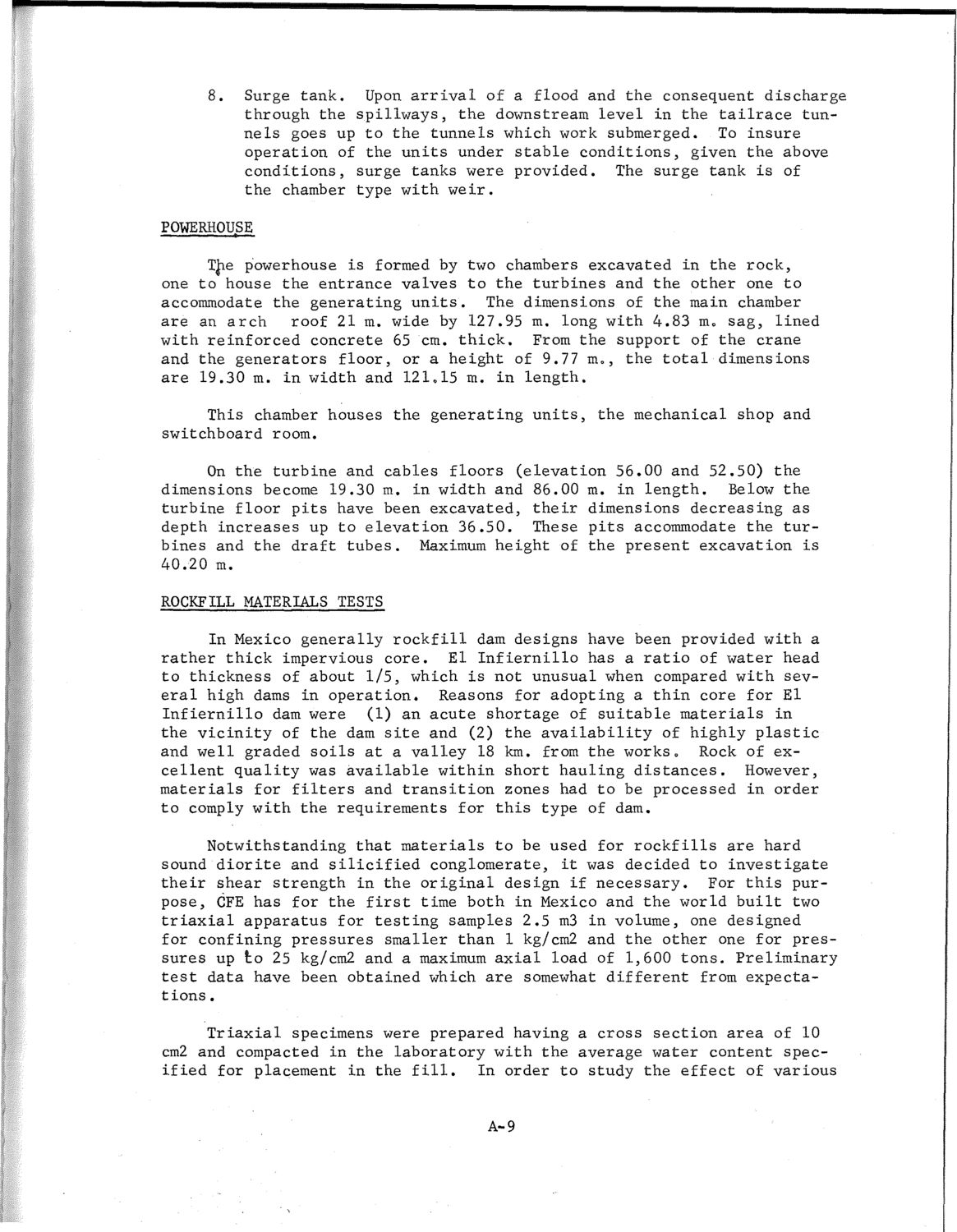| |
| |
Caption: SWE - Proceedings of the First International Conference of Women Engineers and Scientists
This is a reduced-resolution page image for fast online browsing.

EXTRACTED TEXT FROM PAGE:
8. Surge tank. Upon arrival of a flood and the consequent discharge through the spillways, the downstream level in the tailrace tunnels goes up to the tunnels which work submerged. To insure operation of the units under stable conditions, given the above conditions, surge tanks were provided. The surge tank is of the chamber type with weir. POWERHOUSE The powerhouse is formed by two chambers excavated in the rock, one to house the entrance valves to the turbines and the other one to accommodate the generating units. The dimensions of the main chamber are an arch roof 21 m. wide by 127.95 m. long with 4.83 m„ sag, lined with reinforced concrete 65 cm. thick. From the support of the crane and the generators floor, or a height of 9.77 m., the total dimensions are 19.30 m. in width and 121,15 m. in length. This chamber houses the generating units, the mechanical shop and switchboard room. On the turbine and cables floors (elevation 56.00 and 52.50) the dimensions become 19.30 m. in width and 86.00 m. in length. Below the turbine floor pits have been excavated, their dimensions decreasing as depth increases up to elevation 36.50. These pits accommodate the turbines and the draft tubes. Maximum height of the present excavation is 40.20 m. ROCKFILL MATERIALS TESTS In Mexico generally rockfill dam designs have been provided with a rather thick impervious core. El Infiernillo has a ratio of water head to thickness of about 1/5, which is not unusual when compared with several high dams in operation. Reasons for adopting a thin core for El Infiernillo dam were (1) an acute shortage of suitable materials in the vicinity of the dam site and (2) the availability of highly plastic and well graded soils at a valley 18 km. from the works. Rock of excellent quality was available within short hauling distances. However, materials for filters and transition zones had to be processed in order to comply with the requirements for this type of dam. Notwithstanding that materials to be used for rockfills are hard sound diorite and silicified conglomerate, it was decided to investigate their shear strength in the original design if necessary. For this purpose, CFE has for the first time both in Mexico and the world built two triaxial apparatus for testing samples 2.5 m3 in volume, one designed for confining pressures smaller than 1 kg/cm2 and the other one for pressures up to 25 kg/cm2 and a maximum axial load of 1,600 tons. Preliminary test data have been obtained which are somewhat different from expectations. Triaxial specimens were prepared having a cross section area of 10 cm2 and compacted in the laboratory with the average water content specified for placement in the fill. In order to study the effect of various A-9
| |